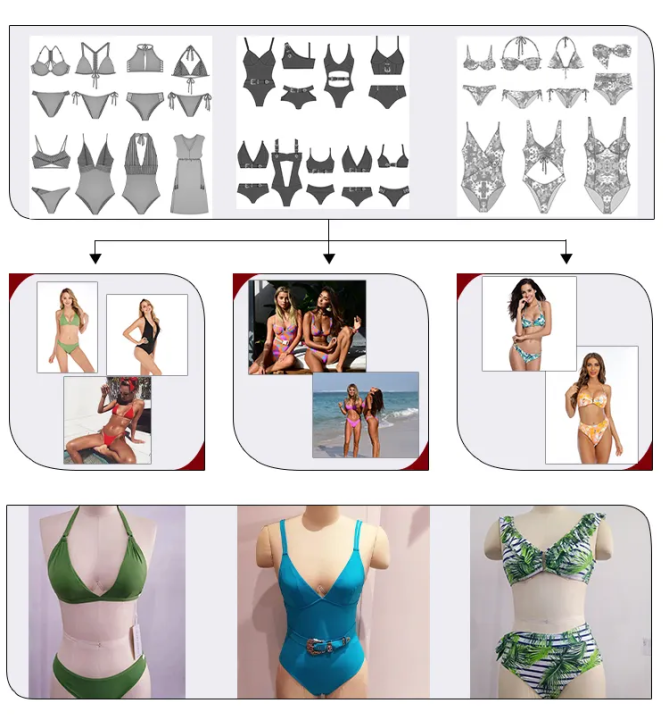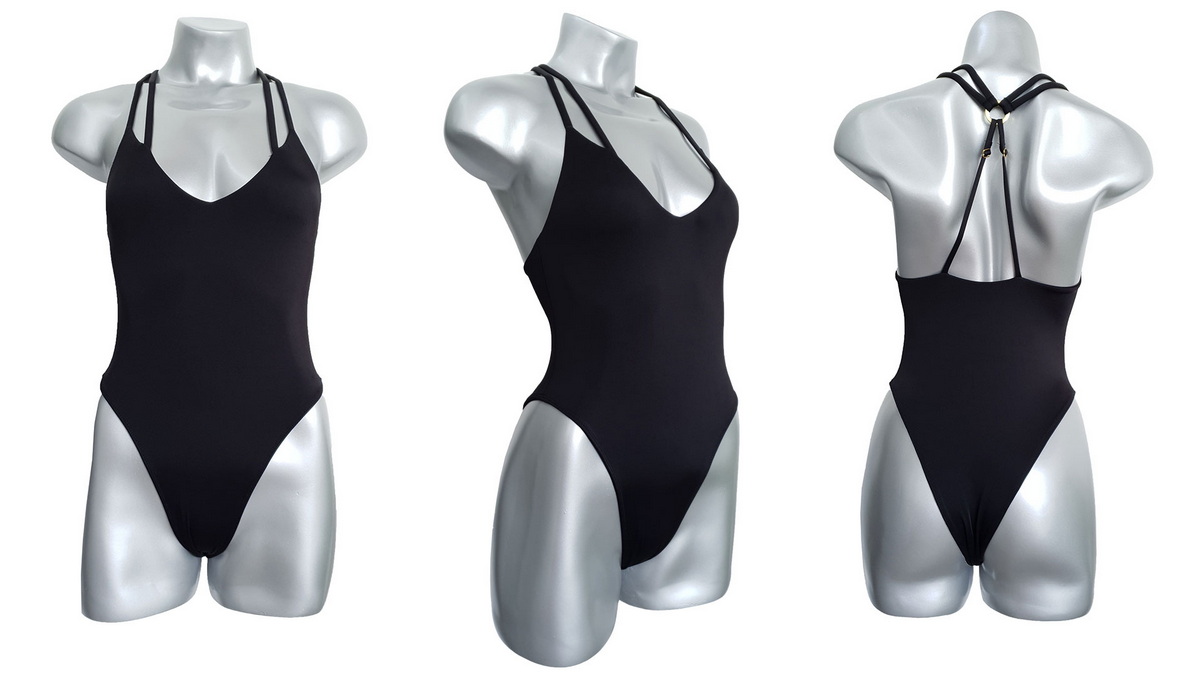Content Menu
● Introduction
● Current Market Landscape
● Sustainable Manufacturing Practices
● Technological Innovations
● Customization and Personalization
● Fashion Trends Influencing Swimwear Design
● Global Sourcing and Supply Chain Management
● Consumer Behavior and Market Demands
● Conclusion
● Questions and Answers
>> 1. What are the key trends in wholesale swimwear manufacturing?
>> 2. How are wholesale swimwear manufacturers addressing sustainability?
>> 3. What role does technology play in swimwear manufacturing?
>> 4. Why is customization important in the swimwear market?
>> 5. How has consumer behavior changed in the swimwear industry?
Introduction
The swimwear industry has undergone significant transformations in recent years, driven by changing consumer preferences, technological advancements, and a growing emphasis on sustainability. As a crucial segment of the fashion market, understanding the latest trends in wholesale swimwear manufacturing is essential for brands, wholesalers, and manufacturers alike. This article explores the current landscape of the swimwear market, highlights key trends shaping the industry, and provides insights into how wholesale swimwear manufacturers can adapt to these changes.

Current Market Landscape
The global swimwear market has seen a steady increase in demand, with a projected growth rate of approximately 6% annually over the next few years. This growth is fueled by rising disposable incomes, increased participation in water sports, and a growing trend towards health and fitness. Key players in the market, including established brands and emerging designers, are continuously innovating to capture consumer interest.
The COVID-19 pandemic has also impacted the swimwear industry, leading to shifts in consumer behavior. With travel restrictions and lockdowns, many consumers turned to local beaches and pools, increasing the demand for swimwear. As a result, wholesale swimwear manufacturers have had to adapt quickly to meet the changing needs of their clients.
Sustainable Manufacturing Practices
One of the most significant trends in wholesale swimwear manufacturing is the shift towards sustainable practices. Consumers are increasingly aware of the environmental impact of their purchases, leading to a demand for eco-friendly swimwear options. Wholesale swimwear manufacturers are responding by incorporating sustainable materials, such as recycled polyester and nylon, into their products.
Brands like Patagonia and Speedo have taken the lead in promoting sustainability by using recycled materials in their swimwear lines. These companies not only reduce waste but also appeal to environmentally conscious consumers. Additionally, some manufacturers are exploring biodegradable fabrics, which break down more easily than traditional materials, further minimizing their environmental footprint.
Sustainability is not just a trend; it is becoming a necessity in the swimwear industry. Wholesale swimwear manufacturers that prioritize eco-friendly practices will likely gain a competitive edge in the market.
Technological Innovations
Technological advancements are revolutionizing the swimwear manufacturing process. Innovations in fabric technology have led to the development of materials that offer enhanced performance features, such as moisture-wicking, UV protection, and chlorine resistance. These features are increasingly important to consumers who seek swimwear that not only looks good but also performs well in various conditions.
Moreover, the use of 3D printing technology is gaining traction in swimwear design and production. This technology allows for rapid prototyping and customization, enabling wholesale swimwear manufacturers to create unique designs tailored to specific customer needs. By reducing lead times and minimizing waste, 3D printing presents a sustainable solution for the industry.
Automation is another area where technology is making a significant impact. Many wholesale swimwear manufacturers are adopting automated processes to streamline production, reduce labor costs, and improve efficiency. This shift not only enhances productivity but also allows manufacturers to respond more quickly to market demands.

Customization and Personalization
The demand for personalized swimwear options is on the rise, driven by consumers' desire for unique and tailored products. Wholesale swimwear manufacturers are increasingly offering customization services, allowing customers to choose colors, patterns, and styles that reflect their individual preferences.
Brands are leveraging technology to facilitate this trend. Online design tools enable consumers to create their own swimwear designs, which can then be produced by wholesale manufacturers. This level of personalization not only enhances customer satisfaction but also fosters brand loyalty.
Additionally, the rise of direct-to-consumer (DTC) brands has further emphasized the importance of customization. DTC brands often rely on wholesale swimwear manufacturers to produce limited-edition collections that cater to specific customer segments, creating a sense of exclusivity and urgency.
Fashion Trends Influencing Swimwear Design
Fashion trends play a crucial role in shaping swimwear design. Current styles reflect a blend of functionality and aesthetics, with an emphasis on bold colors, unique patterns, and innovative cuts. Wholesale swimwear manufacturers must stay attuned to these trends to meet the evolving demands of their clients.
Social media platforms, particularly Instagram and TikTok, have become powerful influencers in the swimwear market. Influencers and celebrities showcase their swimwear choices, driving trends and consumer preferences. As a result, wholesale swimwear manufacturers must be agile in their production processes to quickly respond to emerging styles.
Seasonal trends also impact manufacturing cycles. For instance, summer collections often feature vibrant colors and playful designs, while fall and winter collections may focus on more muted tones and sophisticated styles. Understanding these seasonal shifts is essential for wholesale swimwear manufacturers to optimize their production schedules and inventory management.
Global Sourcing and Supply Chain Management
In today's interconnected world, global sourcing and supply chain management are critical components of wholesale swimwear manufacturing. Manufacturers must navigate challenges such as fluctuating material costs, trade regulations, and geopolitical factors that can impact sourcing decisions.
Many wholesale swimwear manufacturers are exploring nearshoring and reshoring strategies to mitigate risks associated with global supply chains. By relocating production closer to their target markets, manufacturers can reduce lead times and improve responsiveness to consumer demands. This trend is particularly relevant in the wake of the COVID-19 pandemic, which highlighted vulnerabilities in global supply chains.
Efficient supply chain management is essential for maintaining competitiveness in the swimwear market. Wholesale swimwear manufacturers that invest in technology and data analytics can optimize their supply chains, ensuring timely delivery of materials and finished products.
Consumer Behavior and Market Demands
Understanding consumer behavior is crucial for wholesale swimwear manufacturers to succeed in the market. Recent shifts in preferences indicate a growing interest in athleisure and swimwear that can transition from the beach to everyday wear. This trend has led to the development of versatile swimwear designs that cater to a broader audience.
Inclusivity in sizing is another important consideration for manufacturers. Consumers are increasingly seeking swimwear options that cater to diverse body types, and brands that prioritize inclusivity are likely to resonate with a wider customer base. Wholesale swimwear manufacturers can play a vital role in supporting brands that embrace this trend by offering a range of sizes and styles.
The rise of online shopping has also transformed the way consumers purchase swimwear. E-commerce platforms provide convenience and accessibility, allowing consumers to browse and buy swimwear from the comfort of their homes. Wholesale swimwear manufacturers must adapt to this shift by ensuring their products are available through online channels and optimizing their logistics for efficient order fulfillment.
Conclusion
The wholesale swimwear manufacturing industry is evolving rapidly, driven by trends in sustainability, technology, customization, and consumer behavior. As brands and manufacturers navigate this dynamic landscape, staying informed about the latest trends is essential for success. By embracing sustainable practices, leveraging technological innovations, and responding to changing consumer preferences, wholesale swimwear manufacturers can position themselves for growth in a competitive market.
Questions and Answers
1. What are the key trends in wholesale swimwear manufacturing?
Key trends include sustainability, technological innovations, customization, and changing consumer preferences towards inclusivity and athleisure.
2. How are wholesale swimwear manufacturers addressing sustainability?
Manufacturers are incorporating eco-friendly materials, such as recycled fabrics, and adopting sustainable production practices to reduce their environmental impact.
3. What role does technology play in swimwear manufacturing?
Technology enhances fabric performance, enables customization through online design tools, and streamlines production processes through automation and 3D printing.
4. Why is customization important in the swimwear market?
Customization allows consumers to create unique swimwear that reflects their personal style, fostering brand loyalty and enhancing customer satisfaction.
5. How has consumer behavior changed in the swimwear industry?
Consumers are increasingly seeking versatile swimwear that can be worn in various settings, as well as inclusive sizing options that cater to diverse body types.

































































